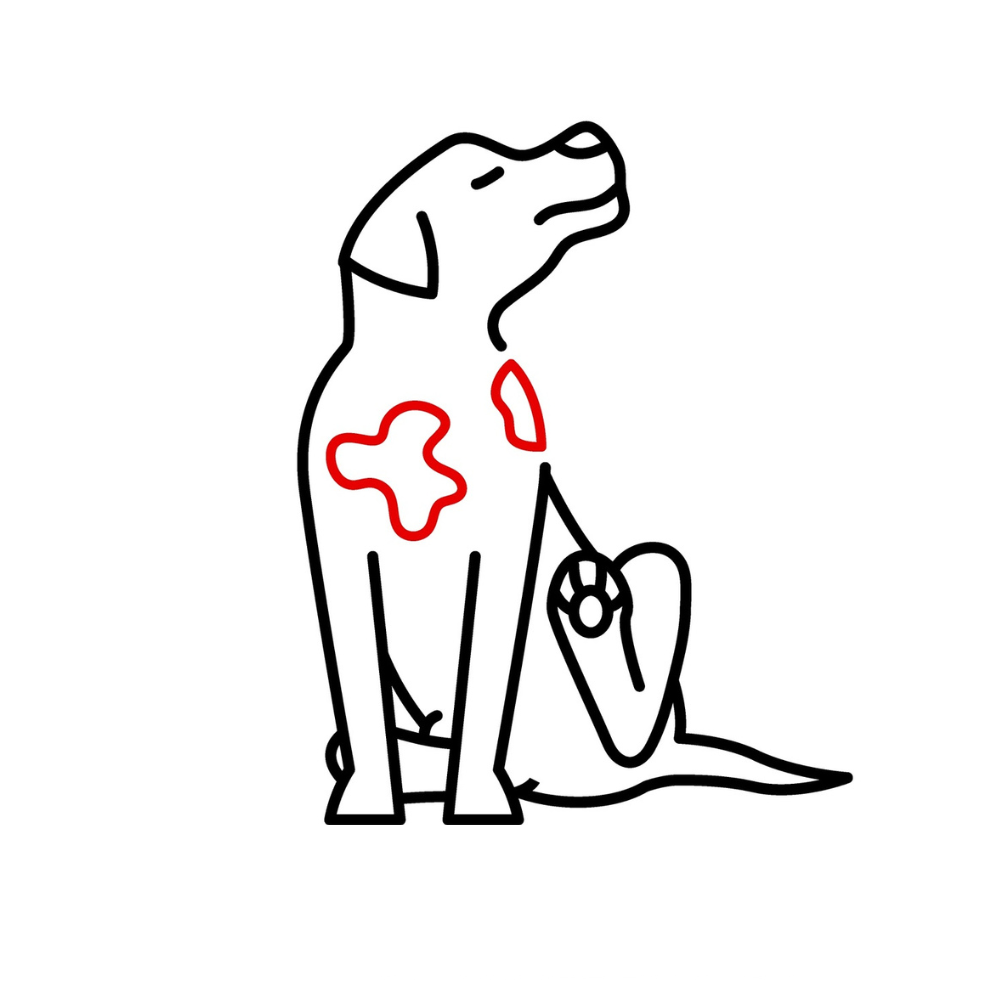
What causes Yeast Infections in dogs?
Share
Yeast infections in dogs are a common yet often misunderstood ailment that can cause discomfort and distress to our pets. These infections can affect various parts of a dog's body, leading to itching, redness, and sometimes more severe complications if left untreated. Explore everything you need to know about yeast infections in dogs, learning their causes, symptoms, effective treatment options, prevention strategies, and more.
Causes of Yeast Infections in Dogs
To understand yeast infections in dogs, it's crucial to first know what leads to them. Yeast infections are primarily triggered by the overgrowth of a type of yeast. This overgrowth can occur due to various factors:
Moisture and Warmth: Yeast thrives in warm, damp environments, making dogs that spend time in water or have skin folds more susceptible.
Weakened Immune System: A weakened immune system can make dogs more vulnerable to yeast infections due to various factors like allergies, autoimmune diseases, or certain medications.
Dietary Factors: Poor nutrition can contribute to yeast overgrowth. A diet high in carbohydrates or imbalanced nutrients can create an environment conducive to yeast growth.
Environmental Allergens: Allergens in a dog's environment, like pollen or dust mites, can trigger allergies, making the skin more susceptible to yeast infections.
Underlying Health Issues: Dogs with health problems such as diabetes or hypothyroidism are at higher risk due to their compromised ability to regulate yeast levels on their skin.
Microbiome Dysbiosis: Microbiome dysbiosis can disrupt the natural balance of microorganisms on a dog's skin. When the microbiome is healthy and diverse, it plays a crucial role in keeping yeast under control. The diverse microbial population competes with yeast, preventing its overgrowth. Imbalances in the microbiome can pave the way for yeast infections by allowing yeast to multiply unchecked.
Recognizing Yeast Infection Symptoms
Detecting a yeast infection in your dog is crucial for timely treatment. Symptoms can vary based on the affected area and may include itching, scratching, redness, inflammation, greasy skin, foul odor, ear problems, and paw issues. However, these symptoms can also be signs of other skin conditions or allergies. Therefore, consulting a veterinarian for a proper diagnosis is essential.
Diagnosis and Veterinary Care
If you suspect your dog has a yeast infection, seek veterinary care for an accurate diagnosis and appropriate treatment. Expect a physical examination, skin scraping, ear examination, allergy testing, and a tailored treatment plan.
Treatment and Management of Yeast Infections
Treatment for yeast infections in dogs involves a multifaceted approach to address underlying causes and alleviate symptoms. This includes antifungal medications, topical treatments, ear medications, dietary changes, environmental management, addressing underlying health issues, and regular vet check-ups.
Preventing Yeast Infections in Dogs
Prevention is key to avoiding yeast infections. Measures include maintaining good hygiene, providing a balanced diet, managing allergies, scheduling regular vet visits, and limiting moisture exposure.
Understanding Recurrent Yeast Infections
Dogs may experience recurrent yeast infections due to factors like incomplete treatment, underlying allergies, immune system issues, resistance to medication, or dietary factors. Consult your vet for guidance in managing recurrent cases
Understanding and addressing yeast infections in dogs is crucial for their overall well-being. By recognizing the causes, symptoms, and treatment options, you can take the necessary steps to ensure your dog's comfort and health. Prevention, through hygiene, proper nutrition, and regular veterinary care, is always preferable to cure. While seeking professional guidance from a veterinarian is essential, the incorporation of natural remedies and home care practices can provide added support. Whether it's a one-time occurrence or a recurrent issue, early intervention and ongoing management are key to helping your pet lead a happier, healthier life with fewer skin problems.
The journey to optimal health for your pet begins here. Explore our dog and cat gut supplements.